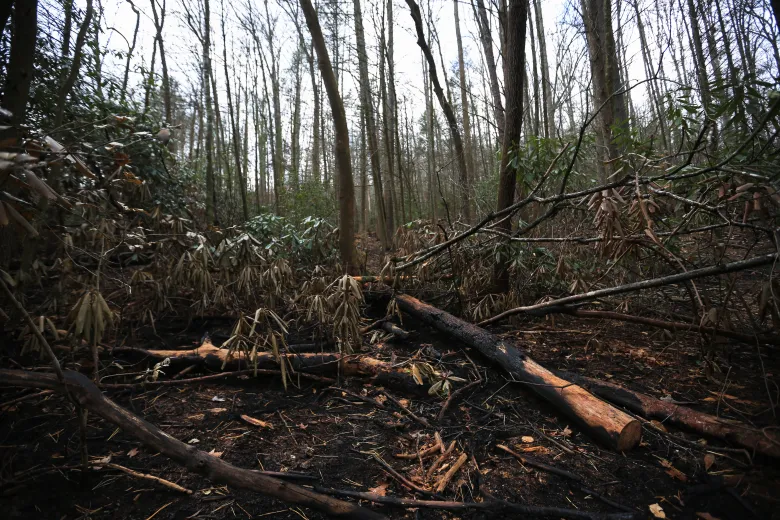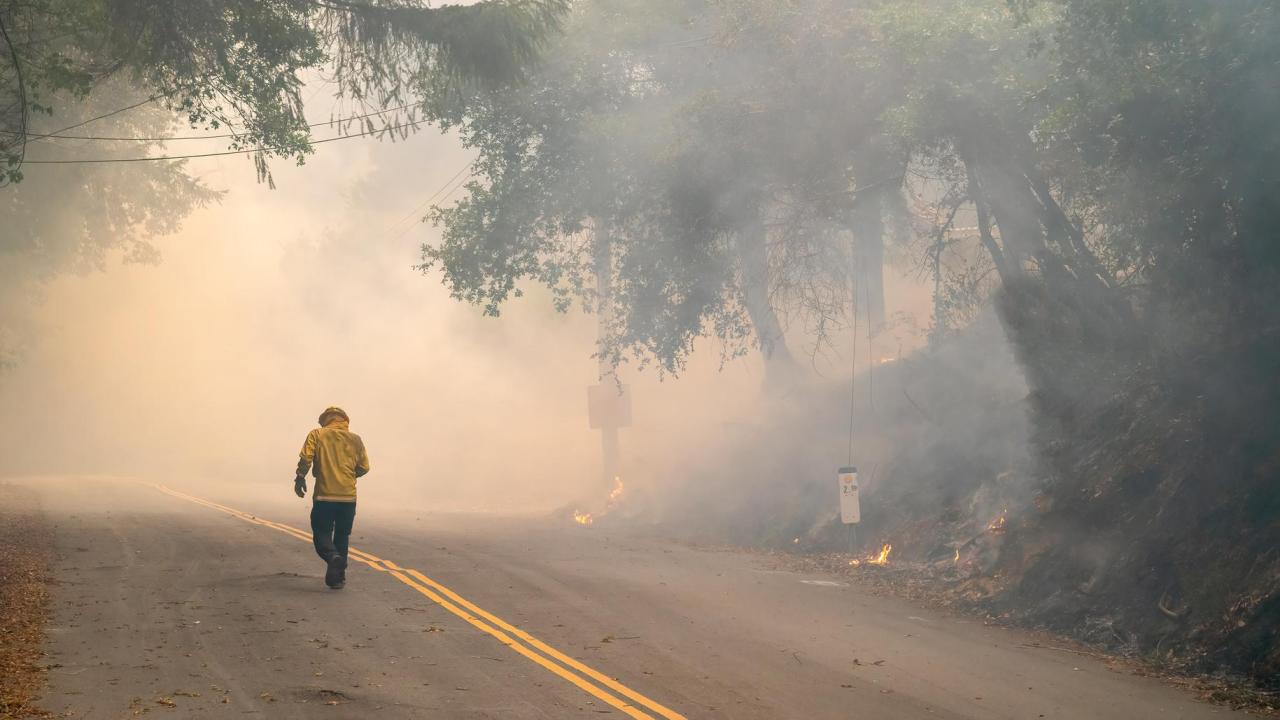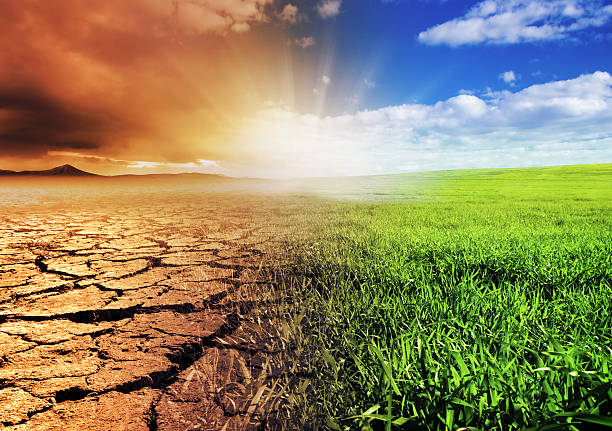Climate Change and the Rising Frequency of Wildfires
Table of Contents:
- Introduction: The Fire-Climate Connection
- Historical Perspective: Wildfires Before the Climate Crisis
- How Climate Change Fuels More Frequent and Intense Wildfires
- The Science: Why Rising Temperatures Increase Fire Risks
- Case Studies: Global Wildfire Hotspots
- Human and Environmental Impacts of Wildfires
- Frequently Asked Questions
- What Can Be Done: Mitigation and Adaptation
- The Role of Communities and Individuals
- Future Outlook: What the Next 50 Years Could Bring
- Conclusion: Taking Action Against Climate-Driven Wildfires
Introduction: The Fire-Climate Connection
It is now impossible to discuss wildfires without also discussing climate change. Across the globe, fire seasons are growing longer, blazes are spreading faster, and the destruction left behind is more severe than anything we have recorded in modern history.
Wildfires were once seen as local tragedies. Today, they have become global symbols of the climate emergency. From the skies of New York turning orange during Canadian wildfires to families in Australia fleeing smoke-filled coastlines and Mediterranean villages reduced to ash, the reality of wildfires and climate change is no longer distant. It is here, and it is reshaping our future.
This blog will explore the science, history, global impacts, and solutions surrounding this growing crisis.
Historical Perspective: Wildfires Before the Climate Crisis
Before we delve into climate change, it’s essential to acknowledge that wildfires are not a new phenomenon. For centuries, they played a natural role in ecosystems. Indigenous communities around the world used controlled burns to clear underbrush, regenerate soil, and encourage new plant growth.
Historically:
- Fires were seasonal and followed natural weather patterns.
- Ecosystems evolved with fire, creating plants that needed occasional burns to reproduce (like California’s giant sequoias).
- While deadly, historic wildfires were limited in both their scale and duration, both geographically and temporally.
In short:
- Yesterday’s fires were part of nature’s cycle.
- Today’s fires, driven by climate change, are part of a global crisis.
How Climate Change Fuels More Frequent and Intense Wildfires
When experts describe the link between wildfire and climate change, they often compare it to pouring gasoline on an open flame. Climate change does not “start” every fire, but it supercharges the conditions that allow fires to ignite, spread, and intensify beyond control.
Here’s how it happens:
1. Hotter Average Temperatures

- Drying Vegetation: Higher temperatures rapidly draw moisture out of plants, grasses, and forests. Vegetation that might once have been damp enough to resist ignition now becomes flammable fuel.
- Heatwaves: Extended heatwaves push ecosystems past their thresholds. For example, the 2021 Pacific Northwest heat dome caused temperatures above 116°F in Portland, shattering records and leaving forests dangerously desiccated.
- “Tinderbox Effect”: With temperatures rising 1–2°C above pre-industrial levels, ecosystems are essentially primed to burn much more easily.
2. Drought and Water Stress
Water scarcity is one of the most devastating ways that climate change fuels wildfires.
- Mega-Droughts: The Western U.S. is currently experiencing what scientists call a “megadrought,” the most severe in over 1,200 years.
- Shrinking Reservoirs: Lakes like Mead and Powell, once vital water sources, have dropped to historic lows, leaving less water for firefighting efforts.
- Weakened Forests: Trees stressed by drought are not only drier but also more susceptible to disease and pests, such as bark beetles. These weakened forests become fields of kindling ready to ignite.
- Mediterranean Example: Southern Europe faces increasing “rainfall deficits.” With hotter summers and fewer storms, the soil dries out completely, making the region highly vulnerable to massive wildfires.
3. Extended Fire Seasons
- Past vs. Present: Traditionally, fire season lasted about four to five months in most temperate climates. In regions such as California, Australia, and parts of South America, the fire season can last eight to ten months or longer.
- Year-Round Threat: In some regions, fire agencies no longer talk about “fire seasons” but instead prepare for “fire years.”
- Global Expansion: Areas once considered relatively safe, such as northern Europe and Canada, are now experiencing record-breaking wildfires.
4. Extreme Weather Patterns
- Wind Shifts: Climate change impacts jet streams and storm tracks, leading to unusual and prolonged wind patterns. These winds drive flames across landscapes faster than firefighters can respond to them.
- Firestorms: Large fires can generate their own weather, producing fire-driven clouds (pyrocumulonimbus). These clouds can hurl embers miles away, starting new fires far from the original blaze.
- Lightning Strikes: Research shows that for every 1°C rise in temperature, the frequency of lightning strikes increases. Lightning is a primary natural ignition source, particularly in remote forests.
- El Niño and La Niña: These climate cycles, intensified by global warming, cause extreme swings between drought and flood conditions, both of which feed into wildfire risk.
5. Urban Sprawl into Fire Zones
Climate change does not act in isolation. Human behavior amplifies the risks.
- Wildland-Urban Interface (WUI): This is where cities meet forests or grasslands. In the U.S., more than 46 million homes are now in WUI zones, where the risk of wildfire destruction is highest.
- Population Growth: As housing costs rise, more communities expand into cheaper, fire-prone regions.
- Infrastructure Hazards: Power lines, construction, and machinery often spark fires. When these ignitions occur in climate-stressed landscapes, they quickly escalate into catastrophic events.
- Example – Paradise, California: The 2018 Camp Fire, one of the deadliest in U.S. history, was sparked by faulty utility equipment and spread rapidly through a WUI zone, destroying an entire town in hours.
- Each of these factors, heat, drought, longer seasons, extreme weather, and urban sprawl, interacts like pieces of a puzzle. On their own, they would be serious problems. Together, they create the conditions for megafires: massive, destructive blazes that burn hotter, last longer, and cover more ground than anything in recorded history.
The Science: Why Rising Temperatures Increase Fire Risks
The science is conclusive: the connection between wildfire and climate change is not coincidental but direct and causal. As the planet warms, every fraction of a degree intensifies the conditions that make wildfires more destructive. To understand why, let’s break down the main scientific mechanisms at work.
- What It Means: VPD measures the difference between the amount of moisture the air can hold and the amount it actually has. In simple terms, it’s the atmosphere’s “thirstiness.”
- Why It Matters: A higher VPD means the air is drier and will aggressively pull moisture out of soils, plants, and trees. When vegetation loses water, it becomes brittle and acts like kindling.
- Scientific Findings: Studies across the American West show that rising VPD directly correlates with increased wildfire activity. In fact, one analysis concluded that about half the forest fire activity since the 1970s is attributable to increases in VPD caused by climate change.
- Historically, snow melted slowly throughout spring and summer, providing rivers and soils with water well into the dry months. This moisture acted as a buffer, delaying the arrival of fire season.
- Climate Shift: With rising global temperatures, snowpacks are becoming thinner, melting faster, and in some cases, disappearing entirely. This means ecosystems enter dry conditions weeks or even months earlier.
- Impact on Fire Seasons: The result is more extended periods when vegetation is stressed and prone to fire. Regions like California, Colorado, and the Andes have seen fire seasons stretch from 8 to 10 months instead of a few months.
- Double Impact: Not only is there less water for the environment, but there’s also less water for firefighting efforts, complicating suppression strategies.
- Fires Release Emissions: When forests burn, they release enormous amounts of carbon dioxide (CO₂), methane, and black carbon (soot).
- Global Warming Effect: These greenhouse gases trap heat in the atmosphere, further raising global temperatures.
- Positive Feedback Cycle: More warming → more fires → more emissions → more warming. This cycle can spiral into a self-reinforcing disaster.
- Example – 2023 Canada Fires: Canada’s record-breaking wildfire season released more than 1 billion tons of CO₂ into the atmosphere, roughly equal to Japan’s annual emissions.

- Pests and Insects: Warmer winters fail to kill off pests like bark beetles. These insects infest and kill vast numbers of trees, leaving behind acres of dead, flammable wood.
- Drought Stress: Trees under water stress shed leaves, drop branches, and accumulate dry debris on forest floors, all of which act as fuel for fires.
- Biodiversity Loss: Species adapted to cooler, wetter climates may die off, further destabilizing ecosystems and leaving invasive, fire-prone plants in their place.
- Massive Fuel Loads: Once-lush forests become weakened wastelands filled with dead biomass. When ignited, these landscapes produce explosive, high-intensity wildfires that are nearly impossible to control.
Case Studies: Global Wildfire Hotspots
- 2018 Camp Fire: Destroyed the town of Paradise, killed 85, and cost $16.5 billion.
- Firefighters now report that fires can create their own weather systems, generating fire tornadoes.
- 46 million acres burned.
- Smoke circled the globe and even reached South America.
- Wildlife populations were decimated.
- Annual wildfires destroy farmland, olive groves, and tourist regions.
- In 2021, record-setting temperatures exceeded 115°F.
- Canada’s worst fire season in recorded history.
- 18 million hectares burned.
- Smoke turned U.S. skies orange for weeks.
Human and Environmental Impacts of Wildfires

- Air pollution from smoke can travel across continents.
- Links to asthma, lung cancer, and heart disease are well-documented.
- Wildfire insurance payouts amount to billions of dollars annually.
- Some insurers are withdrawing from fire-prone markets.
- Deforestation: Ancient forests are destroyed in weeks.
- Soil erosion: Post-fire flooding and mudslides increase.
- Species extinction: Many habitats may never recover.
- Families are displaced for years, sometimes permanently.
- Cultural heritage sites are lost forever.
Frequently Asked Questions
Climate change increases wildfire risk by altering the core environmental conditions that maintain landscape balance. Rising global temperatures create hotter, drier, and windier conditions, which collectively increase the likelihood and severity of wildfires.
- Heat: Higher temperatures dry out soil and vegetation much faster than in the past. Plants that might once have stayed damp enough to resist fire now become brittle fuel.
- Drought: Longer, more frequent droughts reduce soil moisture, weaken plant resilience, and transform forests into tinderboxes.
- Wind: Shifts in climate patterns alter wind behavior. Stronger winds spread flames across vast distances, carrying burning embers into neighborhoods and towns.
- Extreme events, such as heatwaves, lightning storms, and record-breaking dry spells, all intensified by climate change, provide more ignition sources and harsher conditions.
No, not always. Many ignition sources can trigger wildfires, and a significant portion of them are human-caused. For example:
- Accidental Sparks: Campfires, fireworks, cigarettes, or machinery can ignite dry brush.
- Infrastructure Failures: Downed power lines or faulty equipment, such as in California’s Camp Fire of 2018, can spark devastating blazes.
- Arson: Intentional fire-setting remains a global issue.
3. Can we predict fire-prone years?
To some extent, yes. Climate scientists and meteorologists utilize sophisticated models to forecast fire risk based on environmental conditions, including temperature, rainfall, drought levels, and wind patterns.
- Drought Monitoring: Regions experiencing prolonged drought are flagged as high risk.
- El Niño and La Niña Cycles: These global weather patterns strongly influence fire danger. For instance, El Niño years often bring hotter, drier conditions to some regions, increasing fire potential.
- Seasonal Forecasting: Agencies such as the U.S. National Interagency Fire Center (NIFC) and their international counterparts produce seasonal wildfire outlooks that help firefighters prepare for the upcoming season.
But there are limits. Scientists can identify when and where the risk is higher than usual, but predicting the exact timing and location of a fire ignition is impossible. That depends on unpredictable events, like a lightning strike or a spark from human activity.
4. Do wildfires affect only local regions?
- Smoke and Air Quality: Smoke can travel thousands of miles, carrying harmful particles like PM2.5. For example, Canada’s 2023 wildfires blanketed U.S. cities like New York and Washington, D.C., in orange haze, forcing millions to breathe toxic air.
- Water Contamination: Ash and debris from fires often wash into rivers and lakes, polluting drinking water supplies and damaging aquatic ecosystems.
- Climate Feedback: Fires release massive amounts of greenhouse gases, contributing to global warming and worsening the very conditions that make more fires likely.
- Economic Ripples: Tourism, agriculture, and supply chains in unaffected regions can still feel the impact of major fire disasters through reduced travel, higher food prices, or insurance spikes.
Yes, prevention can and does make a significant difference, both in reducing the frequency of wildfires and in minimizing their impact when they do occur.
- Forest Management: Controlled burns, vegetation thinning, and clearing deadwood reduce the amount of fuel available to feed fires.
- Building codes, including the use of fire-resistant materials, ember-proof vents, and defensible space around homes, dramatically reduce the risk of loss in fire-prone areas.
- Community Preparedness: Evacuation plans, firebreaks, and early warning systems save lives and enable firefighters to respond more quickly.
- Climate Action: At the global level, reducing greenhouse gas emissions is the most crucial preventive step, as it addresses the root cause of climate-driven fire conditions.
What Can Be Done: Mitigation and Adaptation
- Cut greenhouse gas emissions.
- Shift to renewable energy.
- Reduce deforestation and restore ecosystems.
- Fireproof building codes.
- Evacuation-ready communities.
- Investment in detection technology (drones, satellites, AI).
The Role of Communities and Individuals
Every person has a role to play:
- Defensible space around homes saves lives.
- Local fire brigades strengthen resilience.
- Public awareness campaigns reduce accidental ignitions.
- Advocacy and voting drive policy change.
Future Outlook: What the Next 50 Years Could Bring
If global warming continues unchecked, scientists predict:
- Fire seasons could last all year long in some regions.
- Fire frequency could double by 2070.
- Communities may abandon entire regions due to repeated wildfire destruction.
- Insurance markets could collapse in fire-prone areas, prompting governments to intervene.
- Some ecosystems, such as boreal forests, may never fully recover from the effects of climate change.
Conclusion: Taking Action Against Climate-Driven Wildfires
The relationship between wildfire and climate change is undeniable. Fires are burning hotter, spreading faster, and causing more damage than ever before. But the future isn’t fixed.
By reducing emissions, improving preparedness, and standing together as communities, we can fight back.

🔥 Don’t wait until it’s too late. If a wildfire has impacted you or your loved ones, Contact Eaton Fire today for a free consultation. Together, we can rebuild stronger, safer, and more resilient.

